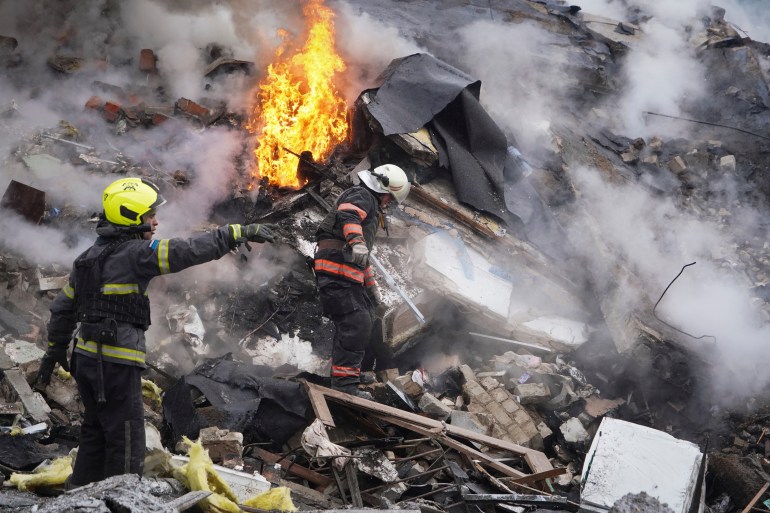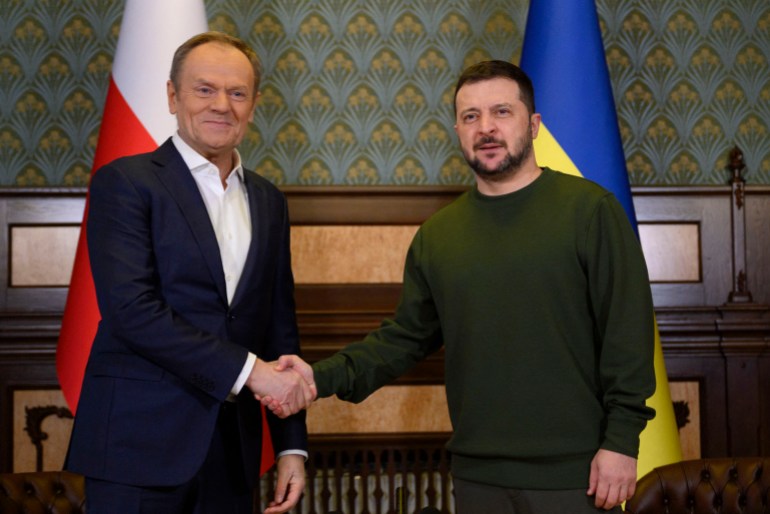NATO has signed a large ammunition deal that it says would help it supply Ukraine with desperately needed stocks.
The military alliance announced on Tuesday that it has signed a deal worth 1.1 billion euros ($1.2bn) to buy artillery shells. The move comes amid intensified exchanges of fire between Russia and Ukraine since the end of last year, which have depleted the latter’s weapons stockpiles.
NATO greenlit the purchase of 220,000 rounds of 155mm ammunition, the most widely sought-after artillery shell, noting that bulk buying for member states should ensure lower prices. Sources said the ammunition would be supplied by French arms maker Nexter and Germany’s Junghans.
“This is important to defend our own territory, to build up our own stocks, but also to continue to support Ukraine,” said NATO Secretary-General Jens Stoltenberg.
“The war in Ukraine has become a battle of ammunition,” he told reporters. “We cannot allow President [Vladimir] Putin to win in Ukraine… That would be a tragedy for the Ukrainians and dangerous for all of us.”

Shoring up support
As progress on the front line has stalled in recent months, Russia and Ukraine have doubled down on exchanges of fire using artillery, missiles and drones.
However, Russia’s arms industry far outweighs Ukraine’s and Kyiv is struggling to secure both financing and weapons supplies from its Western allies needed to continue competing with Moscow’s firepower.
According to European Union estimates, Ukraine was firing around 4,000 to 7,000 artillery shells each day last summer, while Russia was launching more than 20,000 shells daily in its neighbour’s territory.
Drawing on its deep stockpiles, Russia has in recent weeks concentrated on air strikes in a bid to drain Ukraine’s air defence systems. Officials in Kyiv say Russia launched 500 drones and missiles between December 29 and January 2.
Ukraine and its allies are scrambling to keep up. Kyiv has said it intends to produce one million drones in 2024.
Although the European Union fell short of its pledge to supply one million artillery rounds in 2023, officials have said that they expect the European defence industry to raise production by the end of this year.
Polish Prime Minister Donald Tusk on Monday was the latest foreign leader to visit the country, announcing a loan to buy larger weapons and commitments on joint manufacturing.
However, NATO noted that the shells purchased under the new deal will not arrive for two to three years.
And the United States, Ukraine’s main supplier, is currently unable to send Ukraine any ammunition or weapons as it waits for approval from Congress on budgetary needs.

Massive assault
Russia launched its latest air assault against Ukraine on Tuesday. Five people were reported to have been killed in Kyiv and Kharkiv amid a massive barrage.
Ukraine said that the air strikes included more than 40 ballistic, cruise, antiaircraft and guided missiles.
At least 20 people were injured across the capital, including a 13-year-old boy, said Mayor Vitali Klitschko.
In Kharkiv, in northeast Ukraine, the onslaught injured 42 people as the missiles damaged around 30 residential buildings and shattered nearly a thousand apartment windows in icy weather, regional Gov. Oleh Syniehubov said.
Lying about 30km (19 miles) from the border with Russia, Kharkiv has often felt the brunt of Russia’s winter campaign of air strikes that commonly hit civilian areas.
However, the Russian Ministry of Defence insisted that the strikes had targeted facilities that produce missiles, ammunition and explosives. It reiterated previous assertions that it does not aim at civilian targets.
It added that its air defence systems had shot down 56 Ukrainian drones and a HIMARS multiple launch rocket system (MLRS) projectile in the past 24 hours over Ukraine’s Russian-held regions of Luhansk and Donetsk, as well as the Zaporizhia and Kherson regions.








